Thursday 25 April 2024
At the end of November 2023 I was fortunate enough to be invited to make the keynote speech at WTW’s European Renewables Conference in Budapest. It was great to get an insight into what the latest trends are in the renewables industry, and given that WTW is a leading global renewable energy risk advisor and broker, look at the sector from the perspective of risks and how we manage them. The text below is an edited, and slightly longer version of my remarks. The intention was to consider the journey to net zero and provide an overall perspective on the opportunities, challenges and risks. It starts with my personal story of how I got to work on the energy transition and looks at what we can learn about the present and the future from history.
Well good morning. It is a great pleasure to be here in Budapest and to be addressing the WTW European Renewables Conference. It is great to see such a large event as when I was first working in renewables, back in the late 1980s and early 1990s, we could literally have the entire UK wind industry, which was most of the renewable industry at the time, meet in an average sized meeting room – and we did meet like that a few times. The growth of the renewables industry in the nearly 40 years since then has been amazing to watch and is a real illustration of a major energy transition in action. Back then most people in the energy industry still thought of wind as ‘alternative’ and a niche that would never become significant in scale. In fact it reminds me of something my favourite science-fiction writer Arthur C. Clarke once said:
“Every revolutionary idea seems to evoke three stages of reaction. They may be summed up by the phrases: first people say ,‘It’s completely impossible’, then they say ‘It’s possible, but it’s not worth doing’. And then they say ‘I said it was a good idea all along’.”
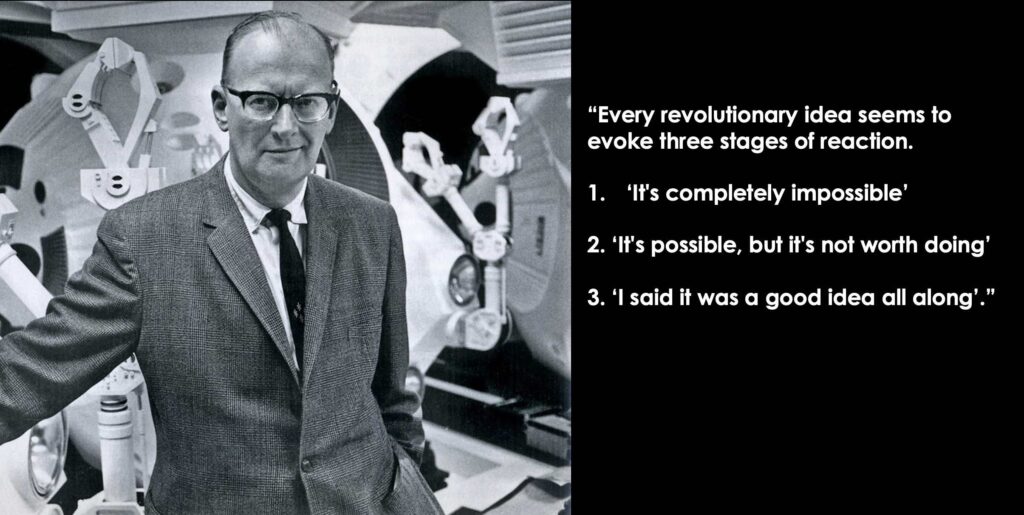
When the renewables revolution started the electricity industry establishment was firmly in the ‘it is impossible’ camp – grid operators around the world said if you have more than a few per cent of renewables on the grid it will cause massive instability. Now we have many countries where levels above 50% are common and there have been many days where levels of nearly 100% have been achieved in various markets. There can no longer be any doubt that very high levels of variable renewables are possible. In renewables we seem to be firmly moving to stage 3 – ‘I told you it was a good idea’, even though there is a vocal minority still saying 2 – ‘its not worth doing’, or even 1, ‘it will never work’.
Anyway, first of all a brief personal introduction. I’m a child of the 1960s, I grew up entranced by the Apollo moon landings and wanted to be an astronaut.
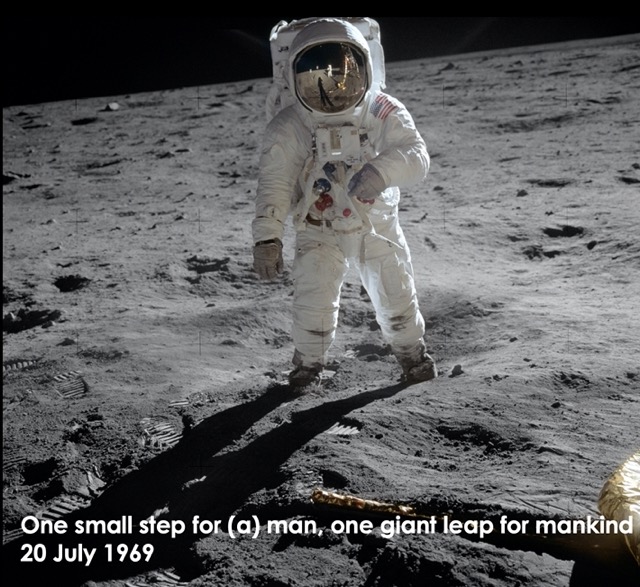
Well, in Britain in the 1970s that wasn’t really a viable career plan and when it came time to go to University the whole aerospace industry was in deep recession. So that, plus the fact that I didn’t want to end up building missiles led me to my second choice of degree subject and I took a unique inter-disciplinary degree focused on energy. So where did my interest in energy come from? Well there are several strands. Firstly, when I was about ten we went on a family holiday to Wales and we visited the Ffestiniog pumped storage hydroelectric plant which made a big impression on me.
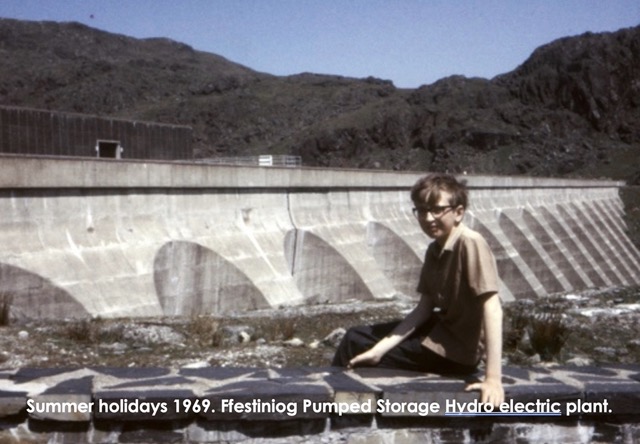
As an aside this year I took my 13 year old grandson to the Cruachan pumped storage hydro-electric plant.
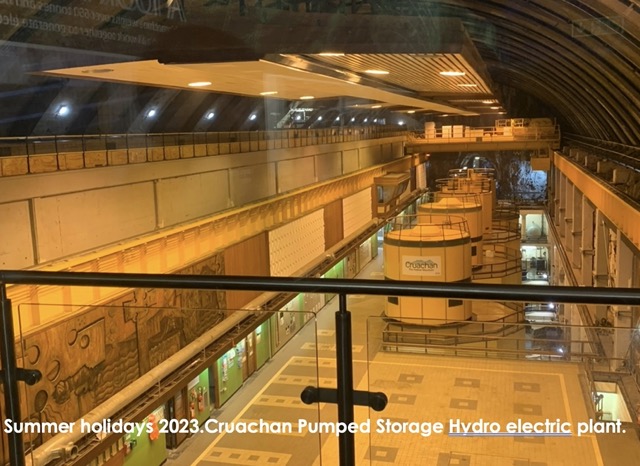
It will be interesting to see if that visit influences his career choice. I would just like to emphasise that we do do other things on holiday than visit energy infrastructure. If you haven’t ever visited a pumped storage hydroelectric plant do it – they are seriously cool big stuff. So back to the influences that made me study energy. A big one of course was that we had the 1973 oil crisis and in the UK, because of the miners strike we had the three day week, when industry was only allowed to work 3 days a week and homes had rolling powercuts. I remember being upset because the power cuts always seemed to come in the middle of my favourite TV shows and then having to do homework by candle light. There’s nothing like power cuts to make you realise how dependent on modern energy supply we are, and of course much more so today than in the 1970s.

Finally, the 1970s were the time when the modern environmental movement emerged. The first ever Earth Day was held on 22 April 1970, and in 1972 the influential book ‘Limits to growth’ came out summarising work supported by the Club of Rome that used computer modelling that showed that given exponential economic growth and finite resources we would run out of resources and society would break down. We were convinced that energy resources, which back then meant coal, oil and gas, would physically run out and run out soon. As I am still an aspiring astronaut I am always pleased that the environmental movement was influenced by the amazing Earth from the Apollo missions, like Earthrise taken on Apollo 8.
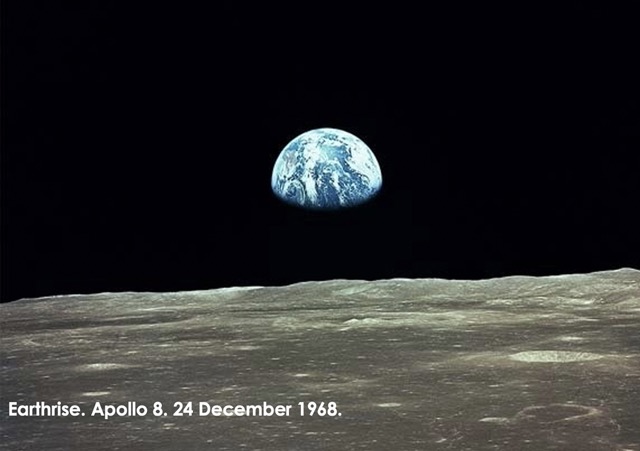
Anyway, those factors led me to a career in energy. After my first degree I focused on energy efficiency, energy services and distributed energy as they seemed to be the future and I think that turned out to be a sound decision as they have kept me busy, and employed ever since, and allowed me to work all over the world and provided the privilege of being able to invest in SME’s participating in the transition through my business ep Group which I started in 2012.
So that’s a little bit about my personal journey through the energy transition but what about the European and global journey to net zero? To understand the present and the future it is really important to understand history. It is not that history repeats itself exactly but we can certainly learn a lot from history and understanding the history of energy transitions is useful.
In my degree we studied previous energy transitions but energy transition was not a phrase widely used, even within the energy industry. President Jimmy Carter in his ‘Address to the nation on energy’ in April 1977 did say:
“Twice in the last several hundred years, there has been a transition in the way people use energy”
and then went on to describe the transition from wood to coal in the 1700s which led to the industrial revolution, and the transition in the 1900s to oil and gas.
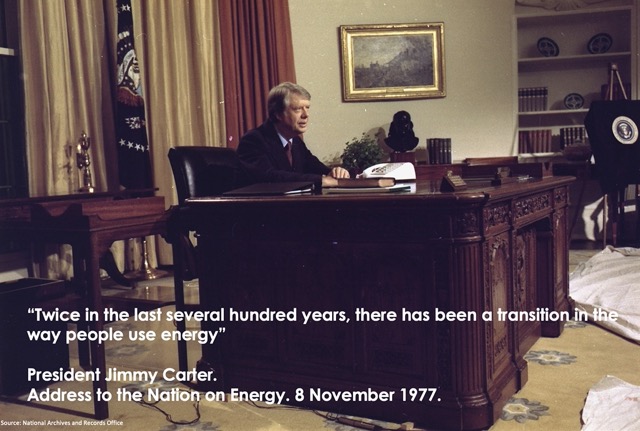
But as a phrase ‘energy transition’ didn’t catch on back then but now it is recognised by most people, except perhaps a few right wing political and media figures, that we are firmly in the middle of an energy transition. And I say the middle deliberately. It is hard to define exactly when an energy transition starts or ends, but this one probably started in that post-1973/74 oil crisis decade of 1975-1985 so about 40 years ago, and we probably have about another 40 years to go on this one. It is the fourth energy transition.
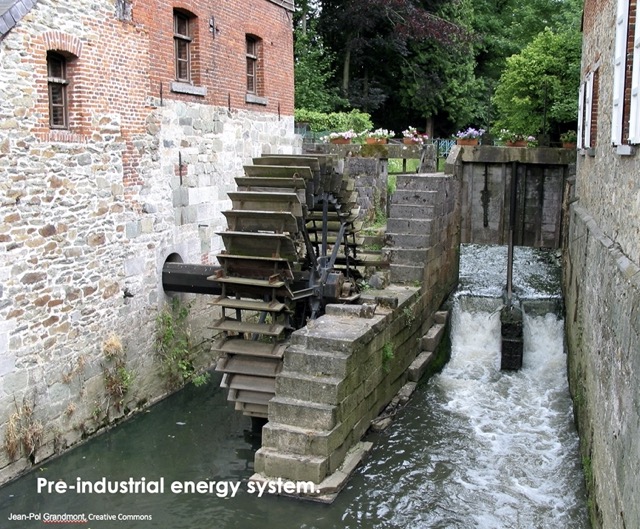
The first energy transition was the transition from biomass and muscle power to coal. Before the Industrial Revolution, people burned wood and dried manure to heat homes and cook food, while relying on muscle power, wind, and water mills to grind grains. Transportation was aided by using carts driven by horses or other animals. In the 16th and 17th centuries, the prices of firewood and charcoal skyrocketed due to shortages. These were driven by increased consumption from both households and industries as economies grew and became more sophisticated.
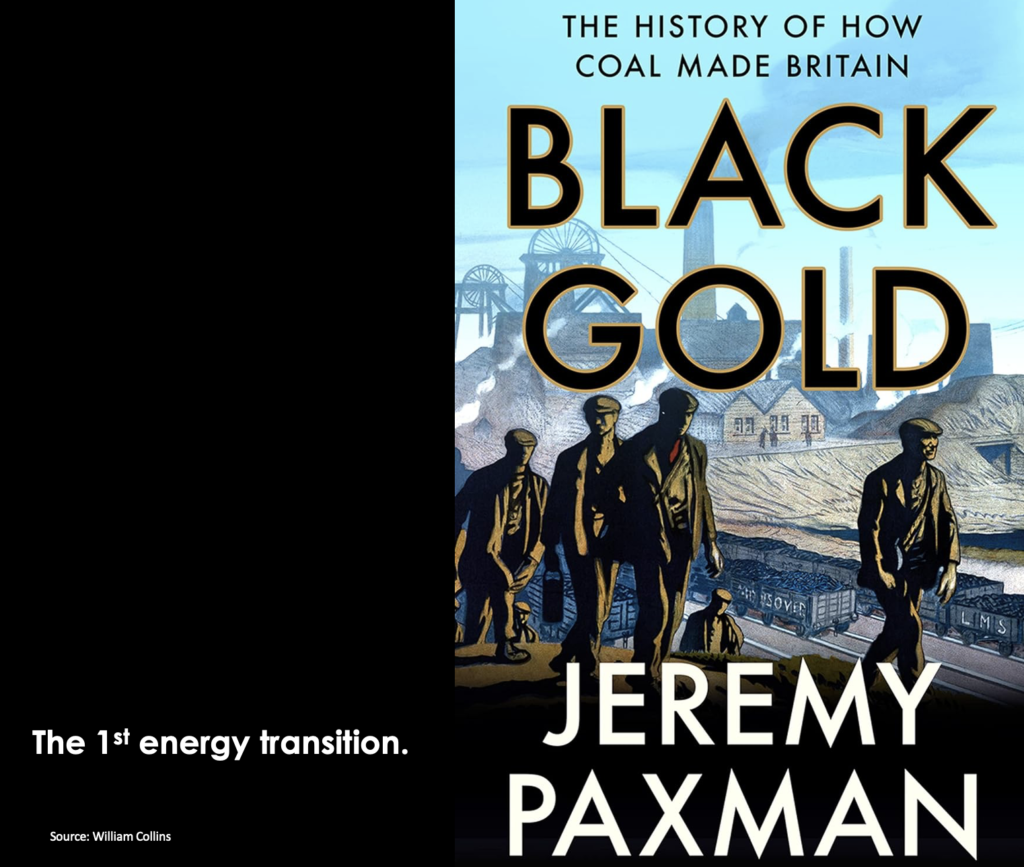
Consequently, economies like the UK needed a new, cheaper source of energy. They turned to coal, marking the beginning of the first major energy transition. The industrial revolution was built on coal and really started in Coalbrookdale in 1708 when Abraham Darby started using coke rather than charcoal to make iron pots. If you want to see the very spot where the industrial revolution started go to Coalbrookdale in Shropshire. That is ground zero for the industrial revolution. If you really want to understand that coal industry with all of its obscenities like child labour and worker exploitation read Jeremy Paxman’s book ‘Black Gold: The History of How Coal Made Britain”.
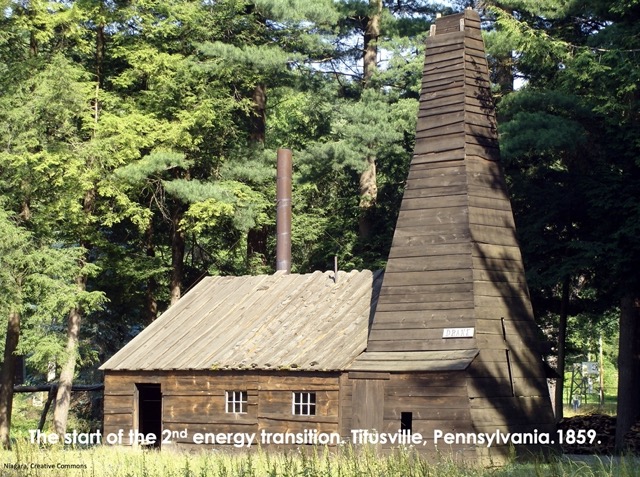
In 1859, Edwin L. Drake built the first commercial oil well in Pennsylvania, but it was nearly a century before oil became the major energy source. Before the mass production of automobiles, oil was mainly used for lamps. Oil demand from internal combustion engine vehicles started climbing after the introduction of assembly lines, and it took off after World War II as vehicle purchases soared.
Similarly, the invention of the Bunsen burner opened up new opportunities to use gas in households, originally towns gas. The discovery of large quantities of ‘natural gas’ in the 1960s/70s – particularly off-shore, led to gas became a major source of energy for home heating, cooking, water heaters, and other appliances, and then ultimately power generation.
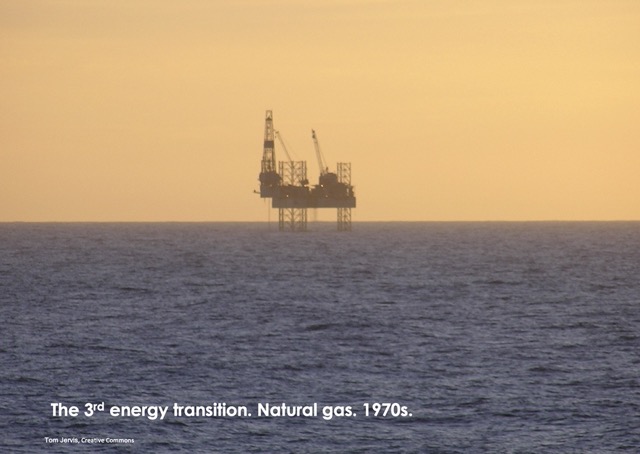
Then there is the fourth energy transition, the one we are living in today, witnessing, and helping make happen, the transition to a low or zero carbon energy system.
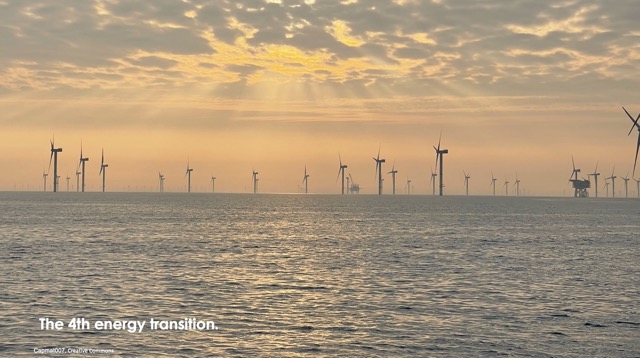
The scale of the current transition is unprecedented. It is a massive challenge – nothing less than changing out all of energy generating and using infrastructure which of course means all of our infrastructure – every fossil fuel power station, every building, every factory, every car and truck, every ship, every aeroplane.
But before becoming too discouraged it is important to understand the nature of transitions. Energy transitions tend to happen in S curves and this has only been recently recognised. S curves are reason for optimism.
S curves are by their nature disruptive – but they don’t feel rapid in the early years and then things accelerate rapidly. As the adage goes: ‘under an S curve things change gradually, and then suddenly’. S curves have five stages:
- Solution search
- Proof of concept
- Early adopters
- System integration
- Market expansion
If I were to characterise where we are in the current energy transition I’d say that we are just moving out of early adopters towards system integration. That may seem strange but when you look at the curves, and the continuing cost down curves – particular for solar – that is the inevitable conclusion. What that really means is that for all the massive growth in renewables we have seen in the last 20 years – you ain’t seen nothing yet. When people get the impression that we are a long way off course that is often driven by implicit linear forecasting rather than using S curves. When you look at S curves the growth in renewables can still be on target for achieving a net zero power system by 2050.
This transition is different in a way because it is the first one that we started consciously, or at least semi-consciously, because we were thinking about questions around sustainability, oil and gas running out one day. The other transitions happened because the new source of energy was cheaper and more convenient than the old.
There are three well known drivers of the current transition and they came in a specific order: first we had sustainability – which ironically in itself is not sustainable as people won’t pay a green premium – or at least not for long, then a few years ago we moved into cost savings as solar and wind fell below the cost of fossil fuel generation, and in the last two years energy security has re-emerged as an important driver. Since the invasion of Ukraine all three drivers have been aligned and that has accelerated the change. Now we have a less well known but very important fourth driver which is emerging – and that is the finance industry becoming proactive and driving change rather than just financing whatever comes along. The finance sector is radically changing, and driven by regulation and demand from asset owners it will push decarbonisation through its loans and its investments. But that’s a lot of green wash I hear you say, true there is green wash but the whole finance sector is shifting dramatically and that is a really powerful force. If you have to meet certain decarbonisation criteria to get investment or a loan or a mortgage on a house you will do it. So, sustainability, cost, security and the finance industry becoming proactive are now all pushing in the same direction and that is a reason for optimism.
We tend to focus on renewable power when talking about the transition but there are of course two other aspects of the journey to net zero which have to be considered, the electrification of heat and the electrification of transport.
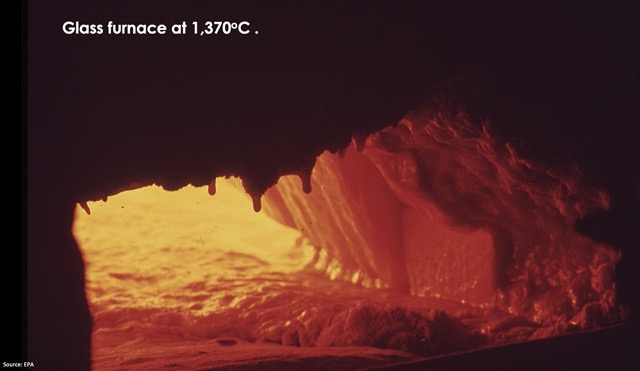
Heat is vital for lots of things from keeping us warm in winter, which requires an internal temperature of 20oC, through to making glass which requires temperatures of about 1,300oC, and making specialist ceramics which requires temperatures up to 2,800oC. Over 44% of total UK energy demand is heat, and that accounts for 37% of emissions. Peak heat load is 3 to 4x peak electricity load. Compared to decarbonising power, decarbonising heat is really hard.
For low temperatures such as domestic heating, the way forward is a combination of heat pumps and energy efficiency. The gas industry wants you to think the future is hydrogen in the gas network but that is a classic case of an incumbent lobbying for something that is nonsense technically and economically in order to maintain their position. For medium temperatures, the biggest proportion of heat in industry, we are starting to see higher temperature heat pumps come in. For high temperatures, then the answer is not so clear. Direct electric heating is possible in some cases, in others the answer will probably be synthetic fuels and hydrogen.
We are also seeing the rapid electrification of road transport. This and the electrification of heat means demand for electricity will go up – but so will the opportunities for demand flexibility. We already have heat pumps with thermal stores that can provide grid flexibility, and we are moving towards grid integrated buildings which generate more power than they use, at least at certain times, and soon we will have vehicle to grid storage. Some people of course say things like: ‘we can’t possibly electrify heat and transport because we would need to double the amount of electricity we need’. Demand growth is a factor but you have to remember that electricity demand in most mature markets is falling due to improved energy efficiency of appliances and lighting, as well as the integration of devices. All of those developments are based on digitisation. And that brings me to my specialist subject, energy efficiency.
It may surprise you but when you do the analysis, improved energy efficiency has delivered more energy services over the last few decades than any other source of energy, roughly three times as much as renewables. The problems with energy efficiency are:
- is it largely invisible, although we are working on some projects that will meter energy efficiency and help to change that
- it is in very small units – as small as individual LEDs as opposed to large power generation stations, and that makes it hard to invest in.
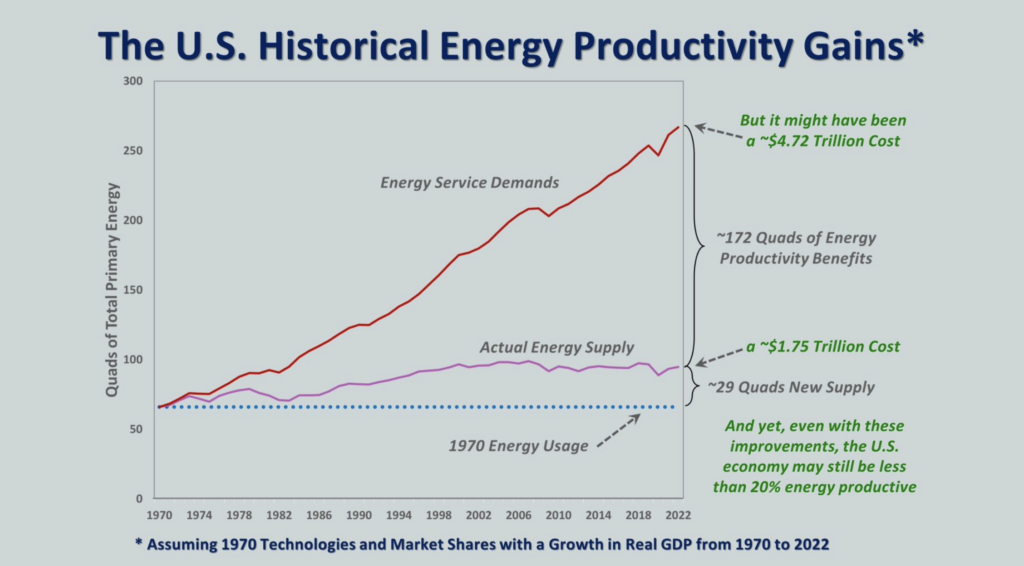
However, we should never forget that the cost-effective potential for energy efficiency is still huge and that every day, in every investment decision, we are missing opportunities for improved efficiency that lock us in to higher than needed energy use and emissions, and lock us into higher than needed investment in energy supply. Don’t forget as well that with a high proportion of renewable generation every electrification decision, whether it is for heating or for cars, leads to a big reduction in primary energy use and emissions. We really need to really think ‘energy efficiency first’ and energy efficiency is the smartest way to manage risk. I think we are about to get serious about energy efficiency and that the next phase of the energy transition will be focused as much on the demand side as the supply side.
It is clear that the end game of the transition in the power sector is a world where renewables make up the majority of power generation, with solar everywhere, and a lot more wind power. That of course means we need flexibility and that will come from two sources, storage and demand flexibility. As you know, storage is taking off. In the UK there is something like 40 GW of storage in planning, which is half the entire capacity of the grid. Now we all know that won’t all be built but even so, it is amazing given it is only a few years since we saw the first battery energy storage system. It is clear that lithium ion batteries have become the core technology for stationary short-term storage but of course we also need long duration energy storage, and we need it at big scale. I talked about pumped storage hydro at the beginning and of course that is a useful technology but sites are inherently limited. It is interesting that there are a number of private sector investments in new pumped storage hydro, including the £500m 600 MW expansion project at Cruachan. As well as pumped hydro storage there are a couple of other technologies that look scalable, liquid air storage, and compressed air energy storage (CAES) in salt caverns. The latter is an old idea where after a forty year gap there is now a lot of development from companies like Corre Energy. The emergence of large quantities of offshore wind has made CAES attractive and each site can be 300 MW. CAES of course can be Long Duration and that is critical. Other technologies like lifting heavy weights up and down look less serious.
The other part of flexibility that is widely under-appreciated is demand response. All the trials around the world show that you can induce significant reductions in demand with the right mix of technology and incentives. In the California heat waves it was companies like Ohm Connect who offer demand response that kept the grid operating.
So that’s the energy transition handled. The optimistic vision is: lots of renewables, lots of storage, lots of flexibility, lots of energy efficiency, electrification and digitisation. Yes, the scale is huge, but all the drivers are pushing in the right direction, and we are only just entering the real growth curve of the S curve. So what are the risks? What are the headwinds?
Of course in energy transitions, things never go smoothly and again looking at history is informative. If we look back at the industrial revolution, and this transition will be just as significant and as impactful as the industrial revolution, we see things didn’t go smoothly. The innovators often don’t survive.
Marc Brunel, the father of Isambard Kingdom Brunel, went to debtors prison for £5,000. His Thames Tunnel, which was the first ever tunnel under water and was called ‘the 8th wonder of the world’, ran out of money half-way through and was never a financial success. However, it is still there and used every day by London Transport. Incidentally if you haven’t visited Brunel’s Thames Tunnel make sure you do it, it is amazing.
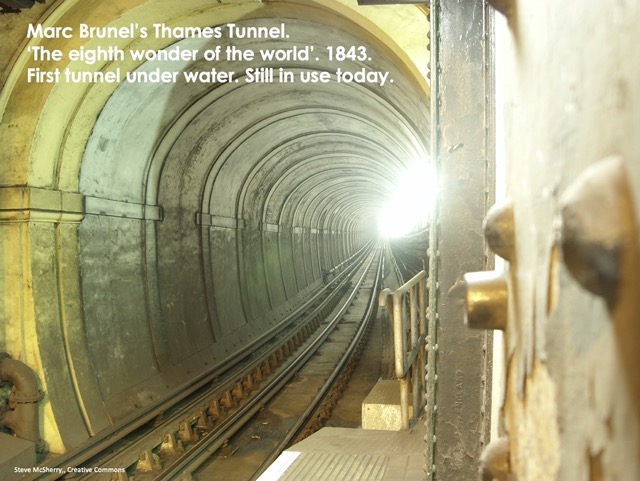
Marc Brunel’s son, Isambard Kingdom Brunel of course is famous because of his work building the Great Western Railway and the great steam ships the Great Britain and the Great Eastern which were the technological marvels of their day.

But even Brunel got it wrong. He backed broad gauge railways and then had to rip them up and rebuild with standard gauge, even though it was much more comfortable and enabled much faster locomotives. He also built the atmospheric railway which was powered by vacuum – but that wasn’t economically viable. It was the Elon Musk Boring Company of its day. The great steam ships never really made money but they did lay the foundations for transoceanic shipping.
In Victorian Britain there was a massive boom in railway building, licences were granted and companies were formed, money raised, speculators bid up land, and there was a massive stock market bubble in railway companies. And of course, inevitably there was a massive bust and lost of people lost money. Much of the infrastructure was built however, and much of it we are still using today, 150 years later.
In something very similar to railway mania in 1990s we had ‘telecom mania’, then we had ‘internet mania’ in the shape of the dot com boom and bust, Then In 2003 to 2008 we had ‘clean tech mania’, now we are seeing ‘hydrogen mania’. There is something about markets and the way that they operate!
If we look at road transport there were other examples of how transitions don’t go smoothly. As early as 1896 no less people were worrying about pollution from gasoline engine cars.
Pedro Salom, a chemist, wrote;
“all the gasoline motors which we have seen, belch forth from their exhaust pipe a continuous stream of partially unconsumed hydrocarbons in the form of a thick smoke with a highly noxious odour”.
Obviously the control of combustion and fuel quality was not what it is today – and as well as pollution people worried about frightening the horses. Salom was not without a vested interest here as he co-founded the Electric Carriage and Wagon Company Inc. at the start of 1896. By 1900 the great Thomas Edison had decided electric cars were the way forward – they were outselling steam cars and gasoline cars at the time – and he wanted to replace the heavy lead acid battery. He spent three years testing different alkaline batteries looking for longer life, durability, safety and a much better weight to energy ratio – all those parameters we continue to seek in battery technology today. He settled on using a positive pole of iron and a negative pole of superoxide of nickel with an aqueous solution of potassium hydroxide as an electrolyte – what we call today a nickel-iron battery. By the way his method of crash testing them was having a random sample thrown from a third floor balcony – a great image. I suppose he didn’t have to worry so much about health and safety or consult his insurance company.
In May 1901 Harper’s Magazine said:
“the famous inventor considers his new storage battery the most valuable of all his inventions, and believes it will revolutionise the whole system of transportation“.
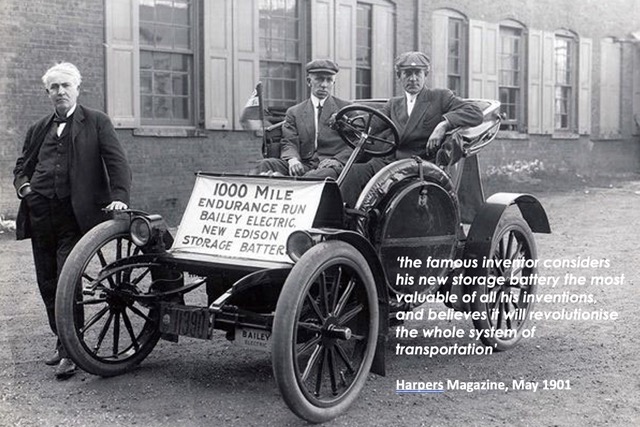
Edison built an assembly plant which opened in May 1901 to produce “500 cells daily” with a target cost of $10 and sales price of $15 – an early example of a ‘giga-factory’. The plant produced different designs optimised for different vehicles including cars and delivery wagons plus illuminating train carriages. Edison’s fame and great ability to get publicity led to a good start with strong sales for a year or so before technical issues were discovered. Cells leaked and power losses of 30 per cent occurred under repeated charging and discharging. Edison continued to innovate – adding nickel flake within the positive plate increased watt hour capacity per pound by 40 per cent – but in the end the market rejected electric vehicles as the gasoline engine improved and the problems with batteries were recognised. The business – The Edison Storage Battery Company – carried on making batteries for other applications and was sold to Exide in 1972 who then stopped making nickel-iron batteries in 1975.
In the early days of the electricity industry Thomas Edison of course was also one of the protagonists in the ‘war of the currents’. He was convinced DC was the answer whereas Westinghouse and Nikola Tesla favoured, correctly as it turned out, AC. The current wars went on for about a decade and involved lots of dirty tricks until Edison eventually accepted AC was the way forward, and of course he wrote the history books. The movie, ‘Current Wars’ is a god dramatization of these events.
Let’s talk about technology development risk.
There is a view, what can be characterised as the Bill Gates view, that we need to develop new technologies to get to a net zero energy system – it is all about innovation. Bill says you really need to innovate new technologies. The alternative view, which can be called the Jigar Shah view, and is the one I subscribe to, is that we need to deploy, deploy and deploy. The trouble with innovation of course is that a) it is risky and b) the innovator rarely makes money.

Of course the picture is more complicated than ‘innovate, innovate, innovate’ versus ‘deploy, deploy, deploy’ and we will always innovate as it is in our DNA. I think the nuance is that the innovate approach depends on big transformative innovations which are high profile, things like Direct Air Capture, Small Modular Reactors, or even fusion power. These are the kinds of things that journalists and politicians like – the bright shiny toys, and all things Bill Gates has invested in. The deploy, deploy, deploy model in reality is based on stuff that we already know works but with constant, incremental innovations that make deployment cheaper, particularly with scale. Incremental innovation in small things, things like an easier, cheaper way of mounting solar panels is at least as powerful, if not more so than big disruptive innovation. It is just not so sexy to work on or for journalists to write about, and not so good for politicians to have their photos taken alongside.
Taking technology development risk is clearly an equity risk – not an insurance risk. Those kinds of risks have to be taken by equity investors, either big corporates or VCs, and by governments funding R, D & D. There is scope, and a good argument, for the public sector to address these risks through mechanisms such as guarantees – and we have seen some of that in the Inflation Reduction Act, and there are likely to be similar mechanisms within the EU’s Net Zero Industry Act. That is a good use of public money that national and regional green banks or infrastructure banks should be doing much more of but they rarely do – they more often seem to end up investing in things that the market likes anyway, which is a crowding out private investment not crowding it in.
Of course there is always political risk. As some of you may realise I have an unusual but very well known surname, at least well known in the UK, Fawkes. I am related to Guy Fawkes, who in 1605 tried to blow up the Houses of Parliament, an event we still commemorate every 5th November with bonfires and fireworks. My name always makes visiting Parliament particularly interesting and as I often say he was the only man to go to Parliament with totally honest intentions. So, not surprising I am interested in politics and policy.

A real risk to achieving net zero is a lack of political leadership. We hear lots of talk about commitment but at the same time we have seen: subsidies coming and going – often with little or no notice in several countries and in some case retroactive changes: the resultant law suits about subsidies change; and more recently in the UK a real step back from net zero targets.
We really need to step up our policy commitments and politicians need to take a longer-term view. They also need to focus on the benefits of decarbonisation, not only reductions in carbon, but also cost savings, wider economic benefits, increased energy security, as well as improvement in health. A real issue is that politicians still seem to view net zero as a cost and a burden, and something that is optional.
We need to see the kind of leadership that John F Kennedy showed when he declared:
“We choose to go to the moon. We choose to go to the moon in this decade and do the other things, not because they are easy, but because they are hard, because that goal will serve to organize and measure the best of our energies and skills, because that challenge is one that we are willing to accept, one we are unwilling to postpone, and one which we intend to win, and the others, too.”
In the same speech JFK said:
“These are extraordinary times. And we face an extraordinary challenge.”
“No role in history could be more difficult or more important.”
“There is no single simple policy which meets this challenge.”
“I believe we possess all the resources and talents necessary. But the facts of the matter are that we have never made the national decisions or marshalled the national resources required for such leadership. We have never specified long-range goals on an urgent time schedule, or managed our resources and our time so as to insure their fulfillment.”
We need leadership like that to address climate change in the same kind of language. I’d vote for a politician who talked like that about climate change.
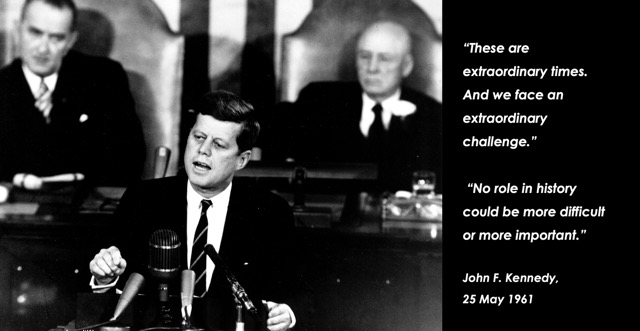
Some of the decisions to roll back policy promises, notably Prime Minister Richi Sunak’s recent change on net zero are clearly putting net zero and renewables firmly in the culture wars, relating renewables and EVs to ‘wokeism’. This is similar to what we see in the US with the former President’s crazy ranting about ‘windmills’ and it is very dangerous – dangerous to democracy.
It really signals a political threat outside the obvious ones about policy change – populism and authoritarianism seem to be on the rise nearly everywhere and represents a real and present danger to democracy. Right now, on the whole, the authoritarian wing seems to be anti-renewables, probably as they are in part funded by oil and gas interests. As they always say ‘follow the money’. However, we can also see a scenario where the effects of climate change get worse and an authoritarian government uses that as an excuse to over-ride personal and corporate freedoms. If you are interested in what that could look like read some of the latter science fiction works of Ben Bova.
On top of that we are now living in a much more dangerous world than even a few years ago, with shifting geopolitical balance. Look at what the Chinese are doing in the Spratly Islands – those artificial islands are not for renewable energy. Then of course we have Russia, which is persecuting a war in Europe. And of course we have the tragic events in Israel and Gaza that could escalate much wider at any moment. In the 1970s we saw energy being used as a geopolitical weapon and we could see that again, in fact we already have. We have seen the explosions that destroyed the Nord Stream 2 pipeline that seem to have been sabotage. We also have seen reports of Russian submarines and ‘underwater research vessels’ spending a lot of time around offshore wind farms and transmission cables. There were even reports that some of the Russian oligarch’s superyachts had submersibles on-board and that weren’t just for fun.
Of course COP 28 is upon us. The fact that it is COP 28 ie the 28th meeting – could be regarded as dispiriting and personally I can’t think of a worse place to go to than a COP, but seriously we have made progress over those 28 meetings. The fact that COP 28 is in the UAE could certainly be considered optimistic given the role of oil in the UAE economy – we will see what comes out of it. But that aside, the joint statement between the US and China announced a couple of weeks ago really is significant. It said triple renewables capacity and cut power sector emissions by 2030, as well as commitments to reduce methane emissions. This is a ground for optimism, especially when you think of the difficulties of negotiating that statement given the wider issues with the US-China relationship I mentioned earlier. Every noun, verb and comma would have been carefully negotiated.
Another risk that I have become more concerned about recently could either be political or what insurers calls ‘nat cat’ risk. I mean EMP – electromagnetic pulse. Increasing electrification and digitisation – both of which we really need – make us more vulnerable to EMP every day. If there was a significant EMP, natural or man-made, the power system across large areas would be down for months because of the long lead time on large transformers. Even with power restored many systems would be fried. If you want a great sense of what the effects of an EMP could be read the novel ‘One Second After’ by William Forschten. One of the counters to EMP could be what is called High Frequency AC (HFAC), which is an emerging power distribution technology that can be applied to Power Supply Units for computers, servers and other electronics, as well as to power distribution buses. It brings a wide range of benefits but also protection from EMP. It is one of the technologies that I think could be a positive surprise, a known unknown if you like.
Another key risk for the renewables industry of course is the issue of grid connections. Basically we’ve grown the decentralised, variable renewable supply side technology by bolting it onto the old grid that was designed for one way power flows from large centralised fossil fuel power stations. Now the costs of that are starting to become visible. We need to rebuild the grid and the distribution system to make it fit for purpose. As well as rebuilding it technologically, there’s a need to redesign how energy markets operate and are regulated. Of course we need to rebuild that particular aeroplane while it is in flight – we can’t turn it off or build another grid alongside the existing one.
Supply chains are talked about a lot nowadays and there are of course risks in expanding supply chains. There are a lot of dimensions to this, including the technology development issues we have seen with scaling up off-shore wind. In some ways however the biggest problem is growing a skilled, technical workforce. In Europe we have a demographic time bomb which means an ageing workforce. At the same time we have a real issue in attracting young people into technical jobs, especially technician level jobs.
The recent IEA energy jobs report showed that clean energy now accounts for more jobs than fossil fuels and highlighted the shortages of skilled technicians.
How do we address that? Industry, government and educators need to come together to set up things let net zero industry academies, and we have to associate these jobs in the minds of young people with positive change and making an impact, we have to make those kind of jobs cool. Maybe we can’t make them as cool as being an astronaut but we can try. Being an off-shore wind technician helicoptering out to a 15 MW offshore turbine may not be quite as cool as being an astronaut, but it is pretty cool and the pay is probably better.
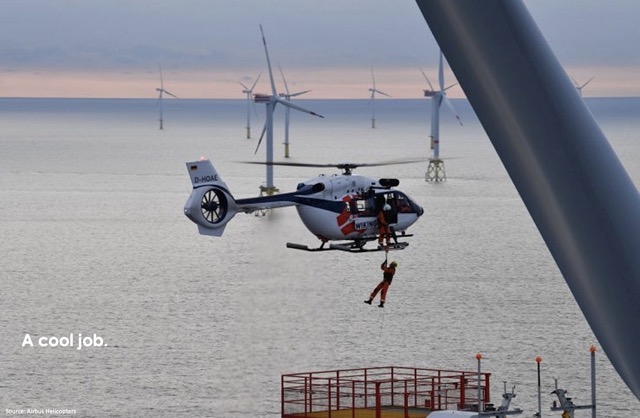
Also we need to have a global workforce working globally – which isn’t helped if we impose excessive visa restrictions. When the cell phone systems were first built out they were often installed by Indian engineers travelling from country to country. I know we are seeing some of this in renewables – but we will need to ramp it up otherwise we just won’t have enough technicians. Even with investment in automation, remote monitoring and control, and AI you can tell your kids to be renewable energy technicians and installers if they want a good job.
Two other types of risk to think about relate to the E, the S and the G in ESG. Firstly there is the need to recognise and address the other environmental risks other than simply climate change, and in particular that means biodiversity. There is no point solving the energy problem or even the climate problem if we have destroyed bio-diversity. Every project, and I mean every project, really does have to be nature positive – and soon the finance world will be demanding it. There are some really interesting concepts out there such as growing oysters around the foundations of offshore wind farms to increase bio-diversity, create food and reduce foundation erosion.

Then of course there is something that the engineers amongst us were not trained to think about and that is the need for a just transition, one that gives everyone modern, affordable energy, and results in an energy system that is fairer and empowers people rather then disempowers them. Failure to do that really adds to social and political risk.
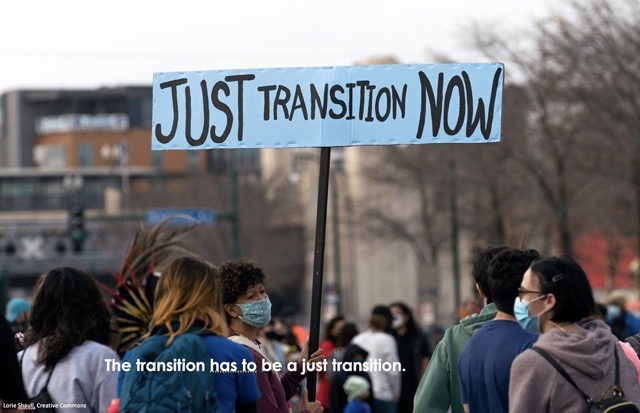
So to try and sum up:
There are real grounds for optimism that we can get to a net zero power system. There are no fundamental technical problems. The power of ‘deploy, deploy, deploy’, S curves and the overlapping drivers of sustainability, cost, energy security and now the direction of the finance sector, all suggest that it is possible. Yes, it may seem that we are a long way off target, and there is no doubt that the task is huge, but then so were previous transitions, we just didn’t think about those as much. Clearly political commitment is important, both national and international – and we do need better policy support. But I think the economics of the situation will counteract even a luke-warm political environment. Politicians are generally followers rather than leaders. Yes of course, there are headwinds and barriers that we all need to work together to resolve, Yes, companies will come and go. Yes, there will be errors and losses of course technical failures and even dead-ends. That is the nature of change. But at the same time we have greater clarity about the end game, greater transparency, more resources, and digital technology.
Having witnessed the first half of this energy transition, and made some small contributions to it, I am looking forward to witnessing as much of the second half of it as I can. I think it will be exciting and even if we don’t quite get to net zero, we will get a long way towards it. There is no doubt the world of 2050 will be very different to the world of 1950, just as the world of 1950 was very different to the world of 1850. It will be better in many ways and in large part that will be down to efforts of everyone in this room and in the renewables industry.
I hope that some of what I have said has been interesting. I am sure that you will have a productive and enjoyable day talking about some of these issues in more detail and I look forward to talking to some of you later in the day.
Comments
Comments are closed.
Dr Steven Fawkes
Welcome to my blog on energy efficiency and energy efficiency financing. The first question people ask is why my blog is called 'only eleven percent' - the answer is here. I look forward to engaging with you!
Tag cloud
Black & Veatch Building technologies Caludie Haignere China Climate co-benefits David Cameron E.On EDF EDF Pulse awards Emissions Energy Energy Bill Energy Efficiency Energy Efficiency Mission energy security Environment Europe FERC Finance Fusion Government Henri Proglio innovation Innovation Gateway investment in energy Investor Confidence Project Investors Jevons paradox M&V Management net zero new technology NorthWestern Energy Stakeholders Nuclear Prime Minister RBS renewables Research survey Technology uk energy policy US USA Wind farmsMy latest entries
- Ethical AI: or ‘Open the Pod Bay Doors HAL’
- ‘This is not the end. It is not even the beginning of the end. But it is, perhaps, the end of the beginning’
- You ain’t seen nothing yet
- Are energy engineers fighting the last war?
- Book review: ‘Stellar’ by James Arbib and Tony Seba
- Oh no – not the barriers again
- Don’t assume ignorance, sloth, bias or stupidity


